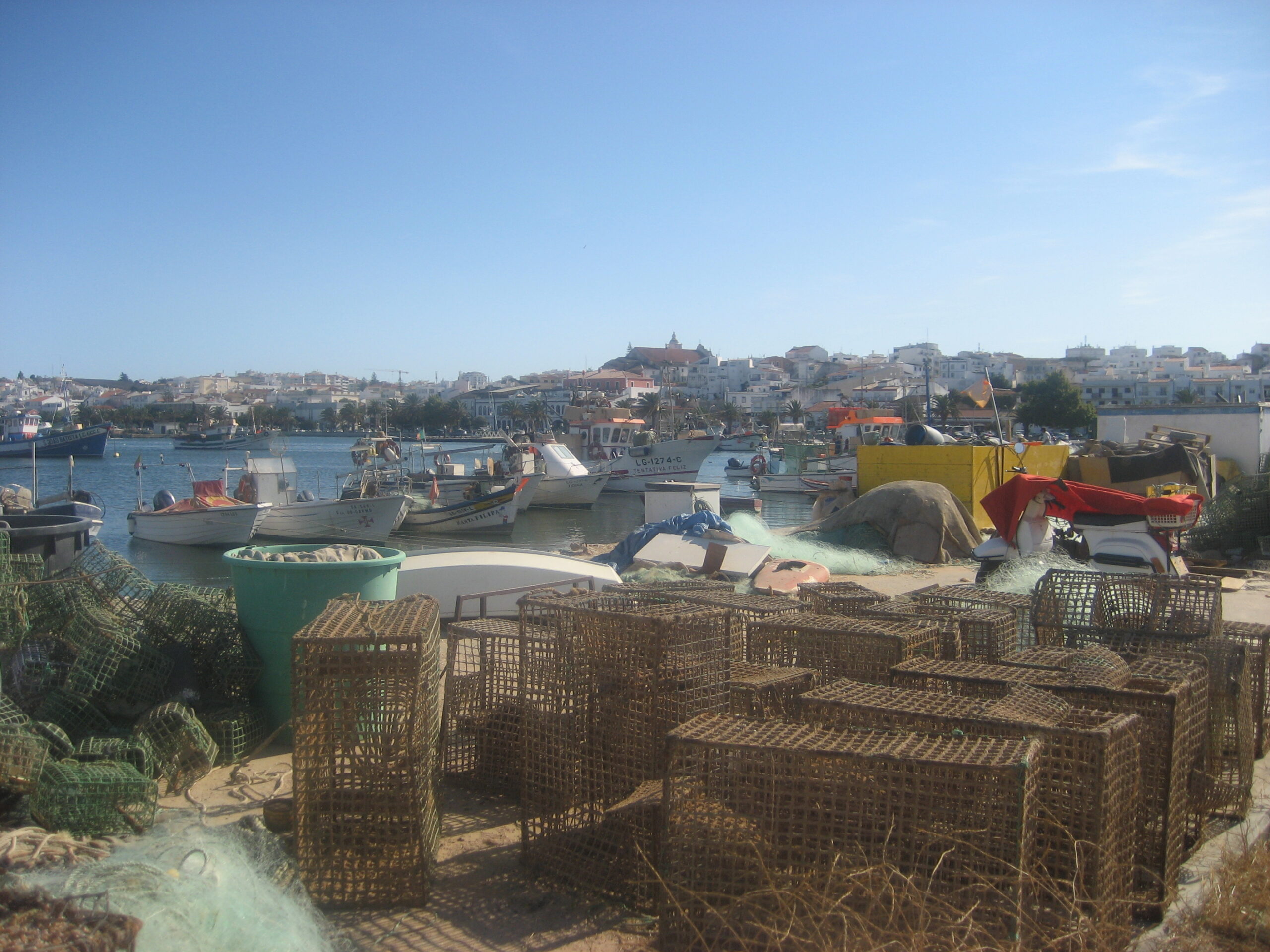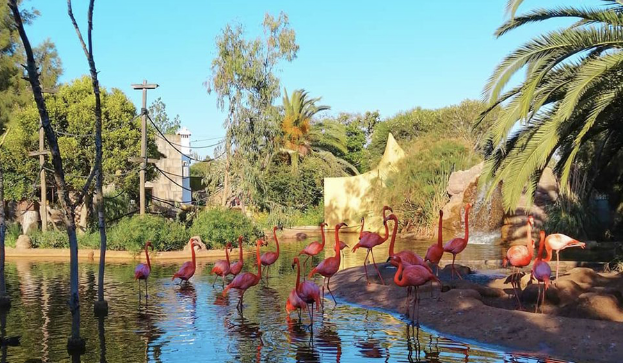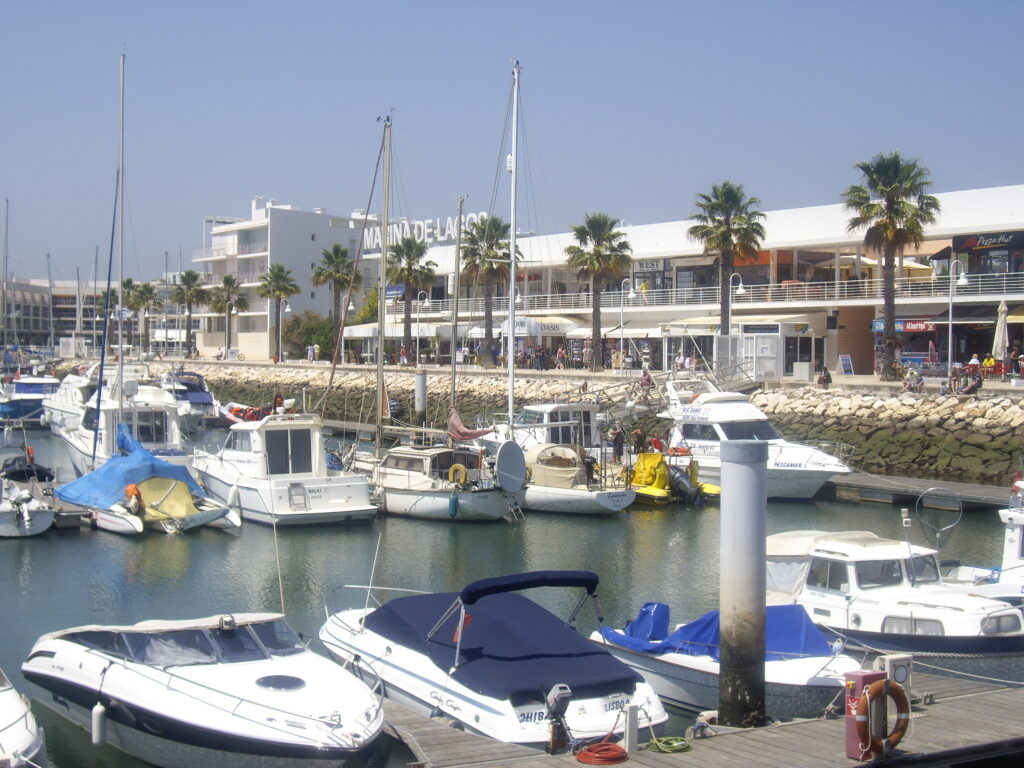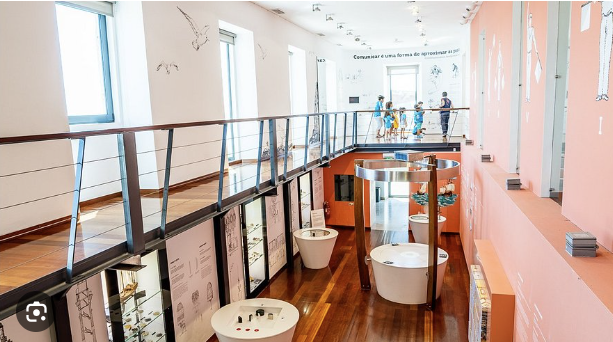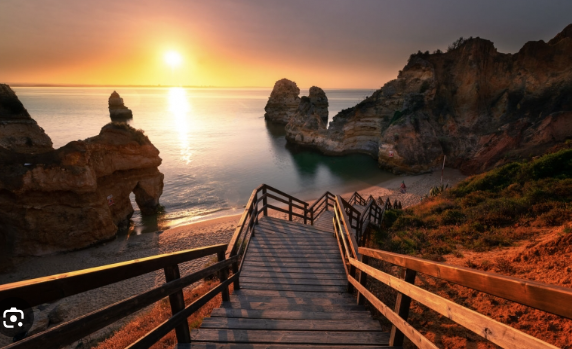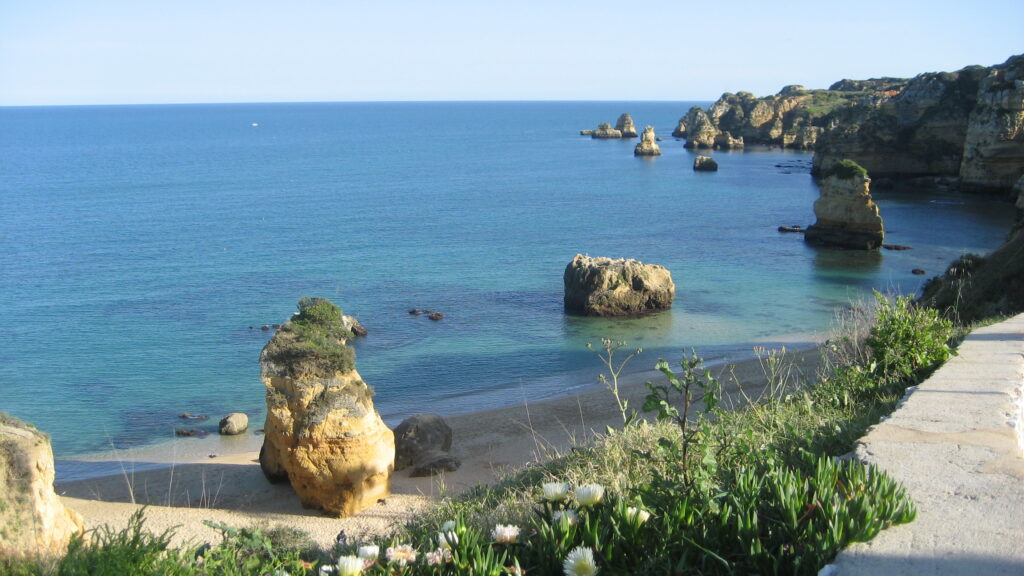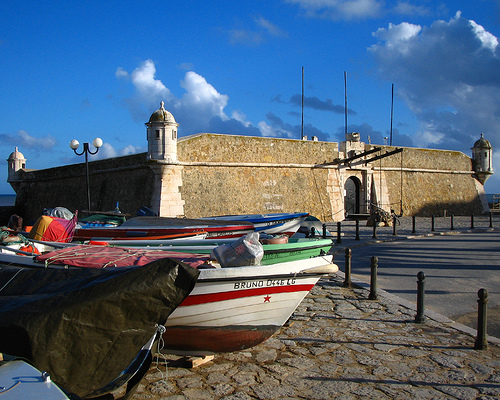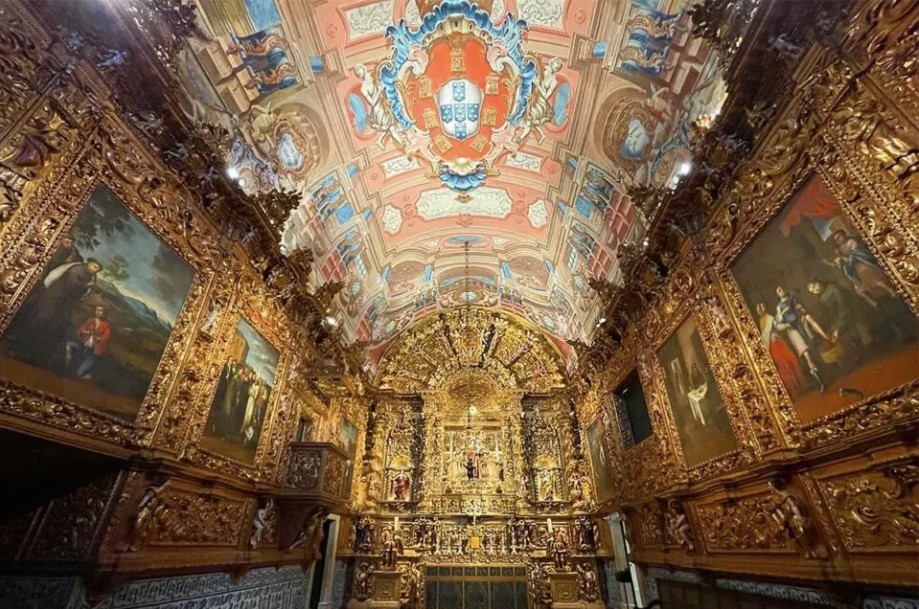Zoo
The Zoo has about 150 animal species from 5 continents in naturalistic habitats. There are regular animal feedings and for a small zoo there is a large variety of animals and the enclosures aren’t too small. Pygmy hippos are a real highlight. There is an impressive selection of Aussie animals and a nice farmyard area with very friendly and curious cows, donkeys, horses and sheep. There are many trees providing much shade, which is very welcome on a hot day.
Marina
The Marina was opened in 1994 and is a popular tourist attraction with a picturesque promenade, and many restaurants and bars. It’s one of our favourite areas for drinks or coffee, especially in the evening to watch the sunset over the Marina. Dining is probably the main activity in the Marina de Lagos with restaurants and bars open all day for breakfast, lunch, or dinner with delicious food, impressive views, and a great vibe.
There is a walkway around the Marina where you can enjoy beautiful views of the harbour. Evenings are our favourite time to come to the Marina for a stroll and a drink. The harbour looks amazing at sunset. The best views you get from the restaurants on the top floor of the main building.
You can also take a boat tour to local attractions such as Ponta da Piedade or Benagil Cave. There are many stands on the south side of the Marina that sell boat tours.
Science Centre
The Lagos Science Centre is a place for science, fun and hands-on learning. Visitors of all ages can participate in activities and interactive exhibitions that show how history, science and technology cross-cross educationally and entertainingly. Three theme areas form the exhibition’s core; Orientation and Navigation Instruments, Life on Board and Distance Communication. The permanent exhibition “From the Astrolabe to the GPS” allows visitors to make connections between discoveries of the past and the present.
Ponta Da Piedade Lighthouse
Ponta da Piedade is a natural wonder in the Algarve, consisting of incredible rock formations, caves and sea arches. It is one of the most beautiful places in the Algarve and Portugal. It’s only a 10-minute drive from Lagos and one of the most popular day trips from Lagos together with Sagres. There is a boardwalk that lines the cliffs and allows you to take in the various cliff formations many of which have been given names such as The Elephant, The Kissing Couple and Camel Beach.
Kayaks and paddleboards flock around unique rock formations, paddle through natural arches, and tourists march up and down the stairs to the bottom like working ants.
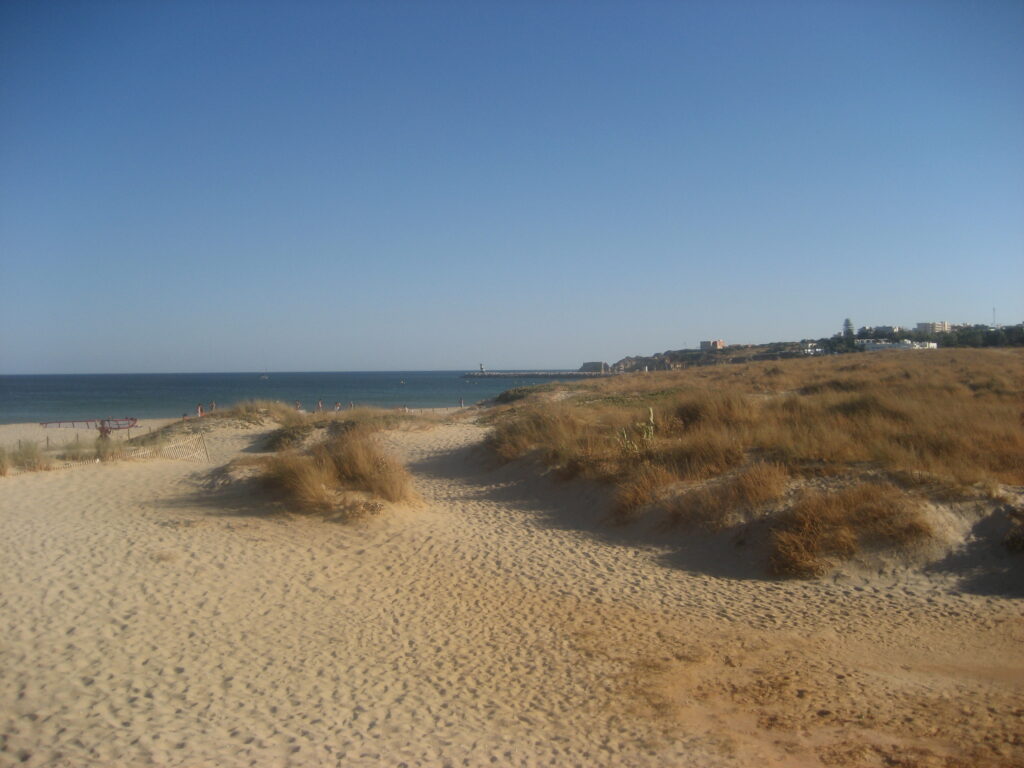
Meia Praia – close to Marina
Meia Praia is one of the longest beaches in the Algarve and the biggest beach in Lagos. It stretches for about 4.5k, great for long beach walks. Due to its size, you can always find an area with space. From the beach, you have a great view of the town. It is perfect for peace, quiet and cleanliness. Never overcrowded, it is an excellent choice for long beach walks and running. Close to the town of Lagos, this is a favourite beach for many locals and tourists all year round.
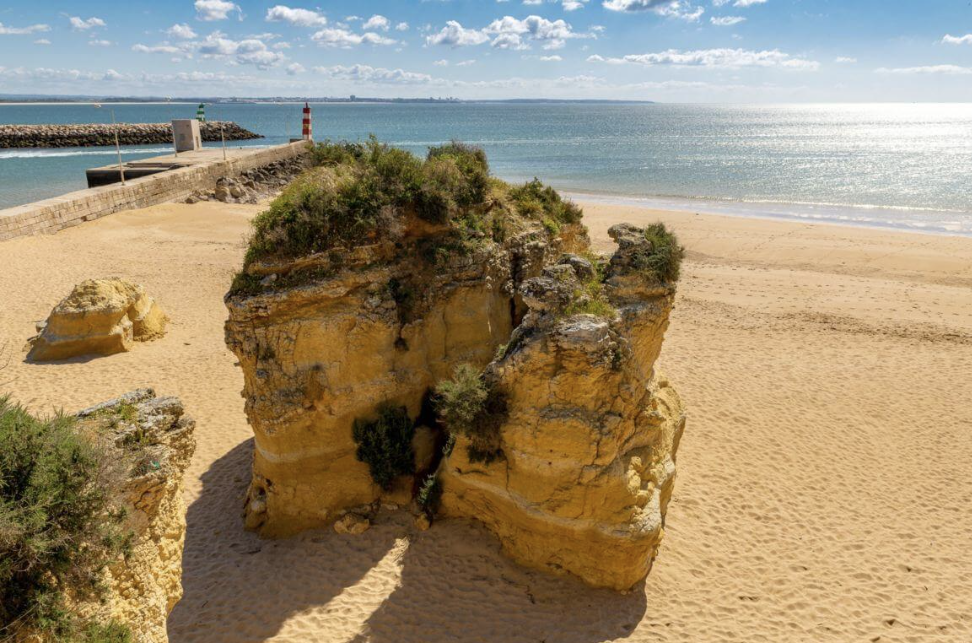
Praia Da Batata – close to Town Centre
Praia da Batata is the closest beach to the town of Lagos. It is relatively small, compared to Meia Praia or Dona Ana. Due to the proximity to the town, the beach is usually quite crowded. There are also several watersports here, like kayaking.

Praia da Dona Ana – Between Lagos and Ponta da Piedade
Praia da Dona Ana is not a large beach at about 160 metres long, making the beach not that big. However, it is one of the most picturesque and photographed beaches on the Algarve. The beach is located between the town of Lagos and Ponta da Piedade. The beach is flanked by Praia do Camilo and Praia do Pinhão.
Praia Do Camilo – Other side of town
Praia do Camilo is a stunning beach. and is located between Praia da Dona Ana and Ponta da Piedade and is listed as one of the best things to do in Lagos on Trip Advisor. The rock formations are beautiful and some caves and tunnels lead to three or four smaller beach areas.
It is a small beach and can get very busy in the summer. To get to Praia do Camilo, you must descend long wooden stairs of about 200 steps. If the steps put you off then it is still worth a visit as from the top the views of the rock formations are stunning, especially at sunset.
Overview
The history of Lagos is long and interesting with a settlement here for over 2,000 years. Long before the Romans came, the Phoenicians had a trading settlement. Greeks and Carthaginians also traded with this settlement. This can be attested by different coins in the Museum of Lagos. The Romans occupied the region and called this settlement Lacóbriga, giving origin to the current name of Lagos. However, during the Moorish occupation, the Moors named the town Zawaya (meaning lago, or lake). The Moors fortified Lagos with a wall that still exists.
Lagos also played a significant part in European history. After all, the Age of Discoveries was started in Lagos. By the 15th century, Lagos became known as the Portuguese centre from which to explore the seas. In 1415, a Portuguese fleet of 200 ships commanded by Henry the Navigator sailed from Lagos to attack the important trade and fortress city of Ceuta in Morocco. This was the start of the Portuguese expansion. Gil Eanes, a captain from Lagos, rounded Cape Bojador (West Africa) in 1434. Until then, no Europeans had dared to round this cape, which was the furthest point known by the Europeans in Africa.
Fort
The Fort of Ponta da Bandeira was built in the 17th century to protect the region from pirates and now serves as a museum. One of the highlights is a small chapel lined with traditional Portuguese tiles. Normally, you can visit the fort and also climb its roof for a great view. Significant restoration work has been carried out over the years and the fort is considered to be one of the best-preserved 17th-century fortifications in the Algarve.

Town Walls
The Romans were the first to build town walls around Lagos and these were reinforced during the Arab and later Christian occupations of the town. The substantial city walls which still stand today around the old historic centre of Lagos date from the 16th century, when raids by Barbary pirates were common and the threat from Spain was very real.
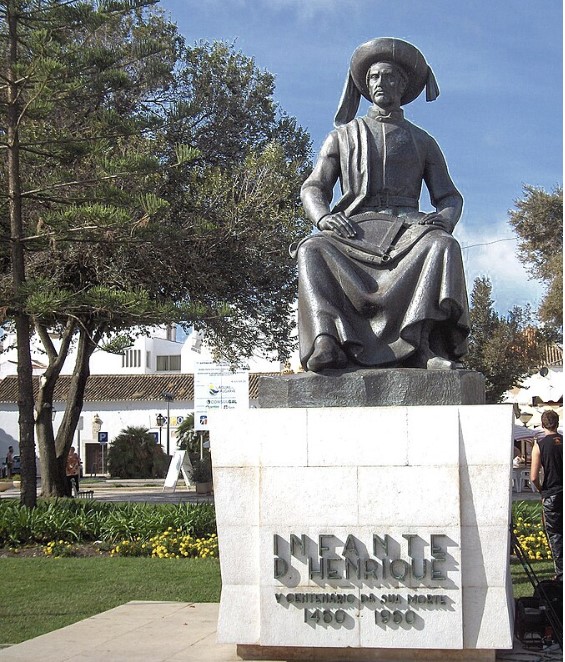
Starting with the nickname “The Navigator”, much of the story of Infante Dom Henrique was myth and legend. Henry supported and launched maritime explorations of Africa but he stayed in Portugal. In Lagos, he sits in the main square of the town.
Museum of Lagos
Lagos has several small museums, probably the most interesting to see is the town museum, Museu de Lagos. It’s adjacent to the Church of Santo Antonio, which can only be visited with a museum ticket. This lavishly decorated chapel of Igreja de Santo António is awe-inspiring and is probably one of the most noteworthy landmarks of Lagos. It’s the main highlight of this museum and the main reason to visit. In addition, the museum has a mix of exhibitions related to the town’s history, regional artefacts, religious art, etc.
You only need 15-20 minutes here, the entrance costs just a few euros, and it’s worth it. The museum is open every day except Mondays.

